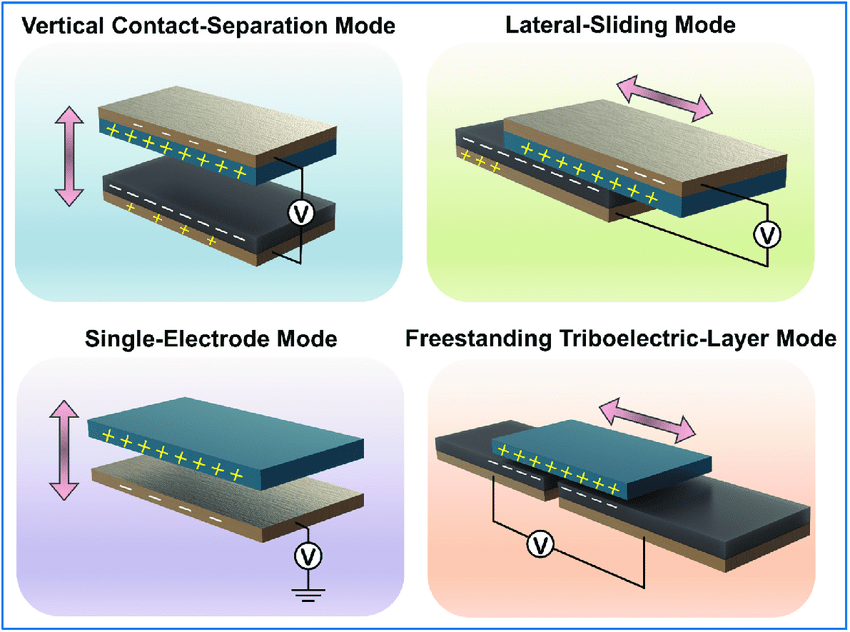I am currently working as a Postgraduate Researcher at the University of Leeds, where I am actively involved in research activities. Prior to this, I successfully completed my master's degree through the renowned Erasmus Mundus joint program, specializing in Tribology and Bachelor's degree in Mechanical Engineering from VTU in Belgaum, India. Further I handle the social media pages for Tribonet and I have my youtube channel Tribo Geek.
Triboelectric Nano generators – TENG
Table of Contents
Introduction
Friction and wear constitute a significant portion of global energy consumption, underscoring the importance of exploring complex tribological processes and finding cost-effective solutions to mitigate their adverse effects. Studies on tribology and triboelectrification mainly focuses on the interplay between the surfaces of mechanical materials in contact and sliding, which has been the subject of extensive investigation. Friction and triboelectrification are closely related due to their common origin in the bonding and breaking of atomic interactions between surfaces. Friction arises from the resistance caused by these interactions during sliding, while triboelectrification results from the transfer of electric charges between materials as they come into contact and separate. Understanding these phenomena is important for numerous applications involving friction and static electricity [1].
Evolution of TENG models
The initial TENG device featured a contact-separation design and comprised a PET film and a Kapton film with back electrodes. It produced AC output by undergoing cyclic pressing or bending, causing changes in the contact status between the films. When the active triboelectric materials, PET and Kapton, came into contact through pressing or bending, they induced triboelectric charges on their surfaces. Upon separation, an electric potential difference formed between the back electrodes. Connecting the electrodes to an external load allowed current flow, neutralizing the electric field. Repeating this cycle generated a continuous AC output. The device’s operation relies on combining contact electrification and electrostatic induction to transform mechanical energy into electricity, offering a straightforward understanding of contact separation TENGs [2].

Figure-1 TENG setup [3]
Working Modes of TENG
Since its inception in 2012, the TENG has been designed to operate in four distinct modes, depending on polarization change and electrode configuration. These modes include the vertical contact-separation (CS) mode, lateral-sliding (LS) mode, single-electrode (SE) mode, and freestanding triboelectric-layer (FT) mode. In the vertical CS mode, relative motion perpendicular to the interface dictates the potential change between the electrodes and the resulting external current flow. The lateral-sliding mode involves relative displacement parallel to the interface and can be efficiently implemented in a compact manner through rotation-induced sliding. In the single-electrode mode, the ground serves as the reference electrode, allowing versatile energy harvesting from freely moving objects without requiring the attachment of an electric conductor. Lastly, the freestanding triboelectric-layer mode, an extension of the single-electrode mode, utilizes a pair of symmetric electrodes, and its electrical output arises from asymmetric charge distribution as the freely moving object changes position [4].

Figure-2 Four working modes of TENG [5]
Application and Future of TENG
The TENG technology is anticipated to have a significant impact on four major fields spanning various disciplines. Firstly, it can serve as a micro/nanopower source for small and portable electronics due to its exceptional performance and the availability of mechanical agitation. By integrating TENG with existing sensor devices, a self-powered system can be created, allowing independent functioning and distributed deployment for real-time, in situ sensing in areas of interest like water quality mapping, forest fire prevention, and wildlife tracking. Secondly, TENG can be utilized as an active, self-powered sensor in Human-Machine Interaction (HMI), robotics, artificial intelligence, and security applications. Developing self-powered sensors can lead to a revolutionary shift similar to the transition from wired to wireless communication. Thirdly, by effectively integrating multiple TENG units into a network and improving their performance through varied materials and designs, it becomes feasible to construct large-scale energy harvesting systems that harness the energy from water waves and wind, also known as blue energy. Lastly, TENG can serve as a high-voltage source for specific HV applications [4].

Figure-3 Applications of Nano electric generators [6]
References


Be the first to comment